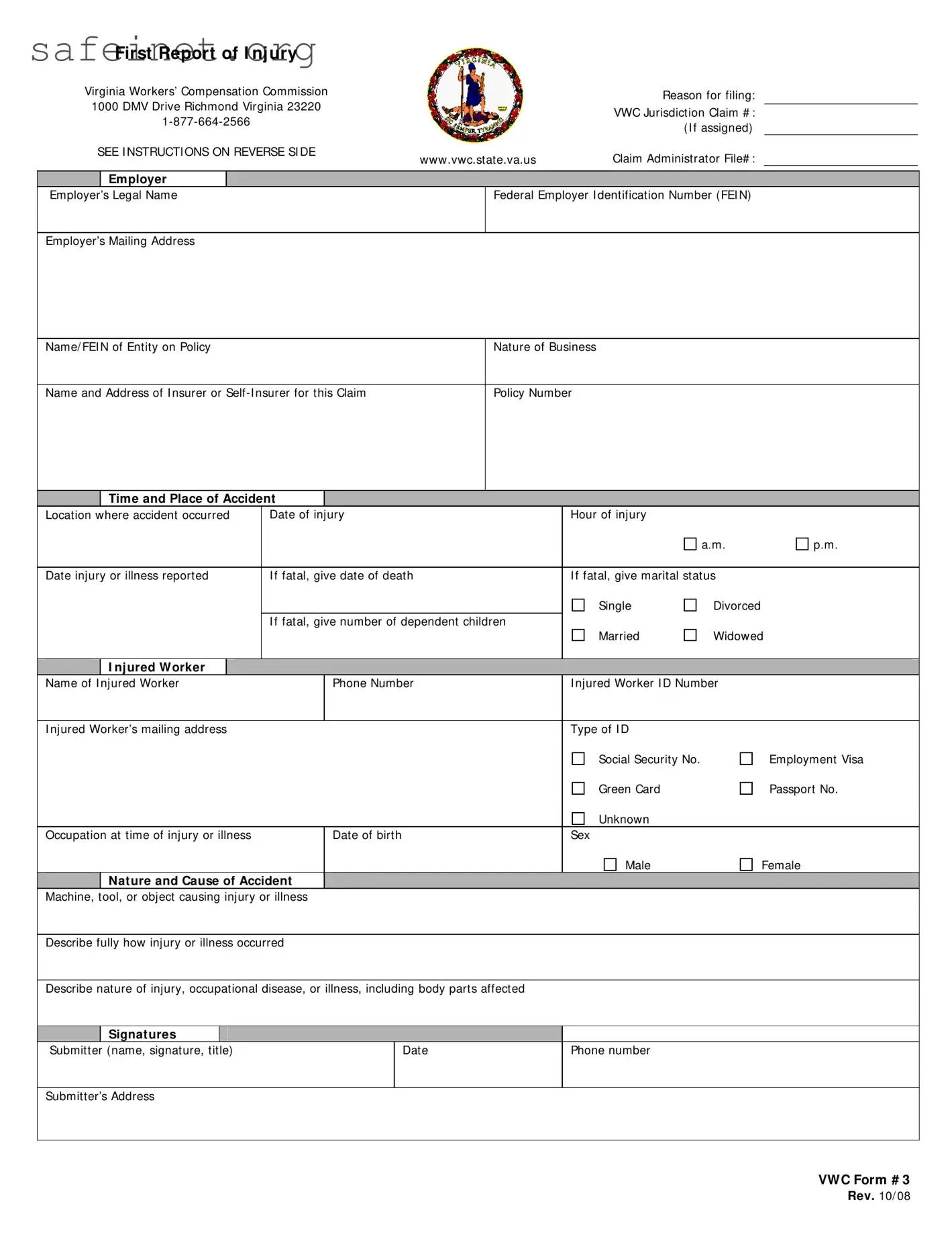What is the purpose of the First Injury Report form?
The First Injury Report form serves as an official document required by the Virginia Workers’ Compensation Commission. It must be filed for all workplace injuries to accurately report the details surrounding the incident. This includes information about the injured worker, the nature of the injury, and the circumstances under which the injury occurred. The completed form aids in ensuring that all necessary claims related to workers’ compensation are properly documented and processed.
Who is responsible for completing and submitting the form?
The employer holds the responsibility for completing the First Injury Report form. All sections must be filled out accurately and legibly, either by typing or clearly printing. The employer or their authorized representative must sign and date the form. After completion, the original form should be sent to the claim administrator for the insurance company that provided coverage at the time of the injury.
When should the First Injury Report form be filed?
The report should be filed as soon as possible after an injury occurs in the course of employment. Timely filing is crucial to comply with the Virginia Workers’ Compensation Act, which requires that any injury be reported. In general, injuries leading to significant consequences, such as lost time from work or high medical expenses, must be reported promptly to ensure the claims process can begin without delays.
What information is required on the form?
The form requires comprehensive details about the injury, including the name and contact information of the injured worker, the nature and cause of the accident, specific details about the injury or illness, and requisite signatures. Additionally, the employer's information, including legal name and Federal Employer Identification Number (FEIN), must be provided, as well as details about the insurance provider and the circumstances surrounding the accident.
What actions should be taken if the injury is fatal?
If the injury results in death, specific information must be provided in the form, such as the date of death, marital status, and the number of dependent children. These details are essential for processing benefits appropriately and ensuring that dependents receive the necessary support due under workers' compensation law.
What if the claim administrator is not EDI enabled?
In the case that the claim administrator is not EDI enabled, the completed First Injury Report form must be filed directly with the Virginia Workers’ Compensation Commission without delay. It is important to comply with the requirements for filing since electronic submissions are mandatory as of June 30, 2009. Until EDI is implemented, ensure that the form is mailed promptly to the Commission at their Richmond address.

